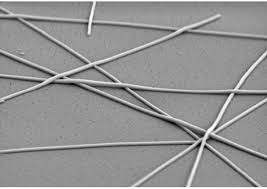SiNW nano-conductor semiconductor nanostructures (based on nano-microelectronics PHD) (educational-research doctorate)
Researcher and author: PhD student Afshin Rashid
Note: Silicon nanowires are one of the best examples of semiconductor nanostructures that can be made into single crystals with a comic diameter of 9 to 0 nanometers.
The advantages of SiNWs in the use and development of sensor operating systems are due to the known properties of silicon and its optimal manufacturing processes. Physical properties of these nano-wires include their electrical, photoelectric and mechanical properties. Nano-wires ( SiNWs) have high surface-to-volume mobility and this makes it easy to control them using a weak electric field. These one-dimensional nanostructures are made of nanowires with a diameter in the nanometer range and more than a micrometer in length. In the manufacture of nanowires, regular one-dimensional arrays have been performed using different physical and chemical methods. Methods such as the use of electron beams or lithography methods, irradiation with heavy ions, lasers, chemical and electrochemical methods Like blue heat, the self-assembly methods used to make mold membranes can be used .
In the construction of one-dimensional nanostructures such as electro-accumulation nanotubes, it includes three general steps: first, making porous molds as substrates and suitable frame for accumulation of nanowires, second, growth of nanowires in line with mold cavities and third, elimination of molds. And the separation of nanowires is from it. The properties of nanowires depend directly on the characteristics of the surface of the mold, such as the size distribution of the cavities, the density of the cavities and the superiority of the nanofill surface. To control the properties of nanowires, it is necessary to consider the parameters that affect the formation and optimization of the diameter of the holes and the thickness of the mold.
Conclusion:
Magnetic nanowires such as cobalt, nickel, iron, and alloys can be made by electro-assembly and spontaneous accumulation on anodic aluminum oxide molds . And the diameter of the nanowires depends. This feature of nanowires can be easily controlled by changing the factors influencing the construction of the mold, such as the potential of the oxidation process and the pH. Applications include chemical nanosensors, logic nanoparticles, and other nanotechnology and nanotechnology tools.




